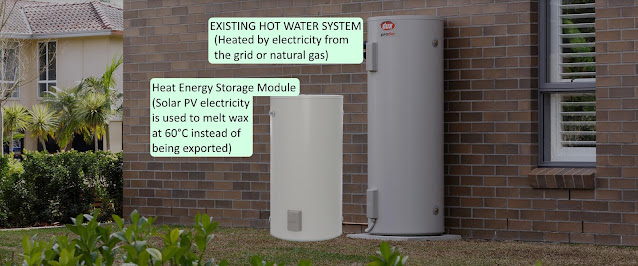Click on the title to view the documents in this list. Each document opens in a new tab.
1.
Priority Investments Limited and subsidiary companies
a.
Annual Report for the period ended 30 June 1997
b.
Signed by Director John Leslie Thompson 29
September 2000
c.
Lodged with Company Office 12 March 2001
2.
Stockton Assets Limited
a.
Annual Report for the period ended 30 June 1997
b.
Signed by Director John Leslie Thompson 29
September 2000
c.
Lodged with Company Office 12 March 2001
3.
Priority Investments Limited
a.
Annual Report for the period ended 30 June 1998
b.
Signed by Director John Leslie Thompson 29
September 2000
c.
Lodged with Company Office 12 March 2001
4.
Priority Investments Limited
a.
Annual Report for the period ended 30 June 1999
b.
Signed by Director John Leslie Thompson 24
December 2000
c.
Lodged with Company Office 12 March 2021
5.
Priority Investments Limited
a.
Annual Report for the period ended 30 June 2000
b.
Signed by Director John Leslie Thompson 25
October 2001
c.
Lodged with Company Office ?
6.
Priority Investments Limited (862094)
a.
Annual return for 2000 – online document filing
b. Directors
and Shareholders –
Directors
John Leslie Thompson
685 Peninsula Road, Kelvin Heights, Queenstown, New
Zealand
Shareholders
Oriano Golo (sic Gold) Pty Limited – 11,445,100 shares
Level 1, 21-23 Grosvenor Street, Neutral Bay, NSW 2089,
Australia
Technomin Australia Pty Ltd – 54,404,000 shares
Level 1, 21-23 Grosvenor Street, Neutral Bay, NSW 2089,
Australia
c.
Is the company a subsidiary of a company
incorporated outside New Zealand? Yes
d. Are
25% or more of voting shares held by a person / body corporate ordinarily
resident outside New Zealand? Yes
7.
Priority Investments Limited
a.
Annual Report for the period ended 30 June 2001
b.
Signed by Director John Leslie Thompson 25
October 2001
c.
Lodged with Company Office ?
8.
Priority Investments Limited
a.
Annual Report for the period ended 30 June 2002
b.
Signed by Director John Leslie Thompson 29
January 2003
c.
Lodged with Company Office 24 March 2003
9.
Priority Investments Limited
a.
Statement of Financial Performance for the
period ended 30 June 2003
b. Lodged
with Company Office ?
10.
Priority Investments Limited
a.
Annual Report for the period ended 30 June 2004
b.
Signed by Director John Leslie Thompson 23
November 2004
c.
Lodged with Company Office ?
11.
Priority Investments Limited
a.
Change of Shareholders – lodged 28 November 2006
Shareholders – Current
Rocksprings Enterprises Limited – 65,849,100 shares
685 Peninsula Road, Kelvin Heights, Queenstown, New
Zealand
Shareholders – Previous
Technomin Australia Pty Ltd – 54,404,000 shares
Level 1, 21-23 Grosvenor Street, Neutral Bay, NSW 2089,
Australia
Shareholders – Removed
Oriano Golo (sic Gold) Pty Limited – 11,445,100 shares
Level 1, 21-23 Grosvenor Street, Neutral Bay, NSW 2089,
Australia
12.
Priority Investments Limited
a.
Change of Shareholders – lodged 3 April 2009
Shareholders - Current
Wayne Jones – 65,849,100 shares
12 Llandilo Avenue, Strathfield, New South Wales,
Australia
Shareholders - Previous
Rocksprings Enterprises Limited – 65,849,100 shares
685 Peninsula Road, Kelvin Heights, Queenstown, New
Zealand
13.
Technomin Australia Pty Limited
a.
ASIC Current and Historical Information
Director – 25 Jul 1986 to 4 Nov 2017
John Leslie Thompson
685 Peninsula Road, Kelvin Heights, Queenstown, New
Zealand
Director – 4 Jun 2008 to 27 Jun 2009
Rebecca Catherine Thompson
20 Falls Street, Leichhardt, NSW 2040
Director – 28 Jan 1997 to 4 Jun 2008
Malcolm John Kendall
12 Endeavour Street, Sylvania, NSW 2224
Registered Address – 17 Oct 1994 to 29 Oct 2007
Level 1, 21-23 Grosvenor Street, Neutral Bay, NSW 2089
Ultimate Holding Company – 28 Jan 1996 to 18 Jan 2015
Rocksprings Enterprises Limited
14.
Oriana Gold Pty Limited – 11 Aug 1994 to 10 Dec 2007
a.
ASIC Current and Historical Information
Director – 5 Jun 2008
Wayne Jones
12 Llandilo Avenue, Strathfield, New South Wales,
Australia
Director – 25 Sep 1986 to 5 Jun 2008
John Leslie Thompson
685 Peninsula Road, Kelvin Heights, Queenstown, New
Zealand
Director – 28 Jan 1997 to 4 Jun 2008
Malcolm John Kendall
12 Endeavour Street, Sylvania, NSW 2224
Registered Address – 17 Oct 1994 to 29 Oct 2007
Level 1, 21-23 Grosvenor Street, Neutral Bay, NSW 2089
Ultimate Holding Company
Rocksprings Enterprises Limited
Shareholder – 16 May 2024
Wayne Jones
12 Llandilo Avenue, Strathfield, New South Wales,
Australia
Previous Shareholder – 26 Jun 2008
Agriwealth Pty Limited
PO BOX 718, Neutral Bay NSW 2089
Previous Shareholder – 24 Oct 2007
Technomin Australia Limited
PO BOX 718, Neutral Bay NSW 2089
15.
Rocksprings Enterprises Limited
a.
New Zealand Company Extract
Incorporated – 9 Jun 1994
Director
John Leslie Thompson
685 Peninsula Road, Kelvin Heights, Queenstown, New
Zealand
Shareholder
John Leslie Thompson – 117 shares
685 Peninsula Road, Kelvin Heights, Queenstown, New
Zealand






